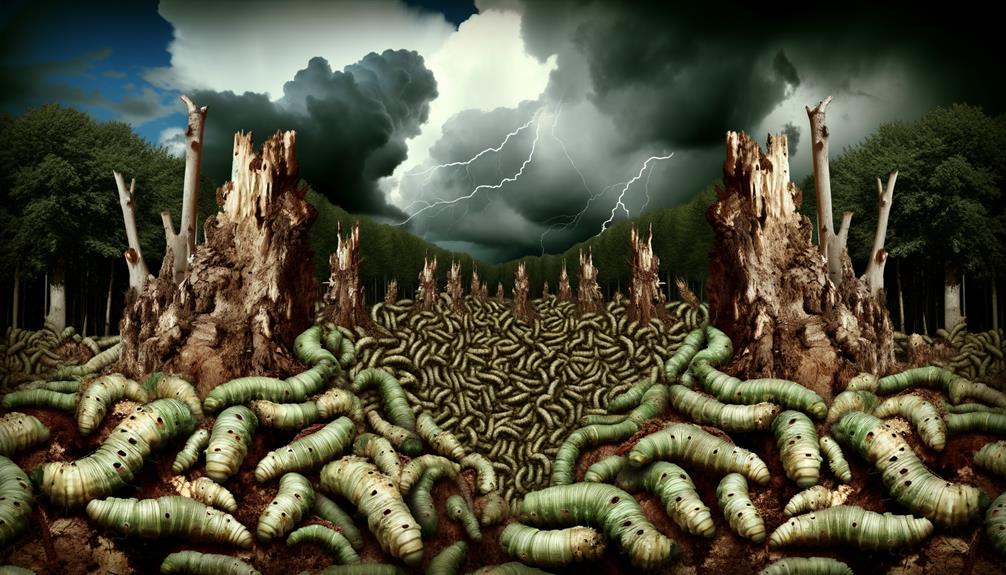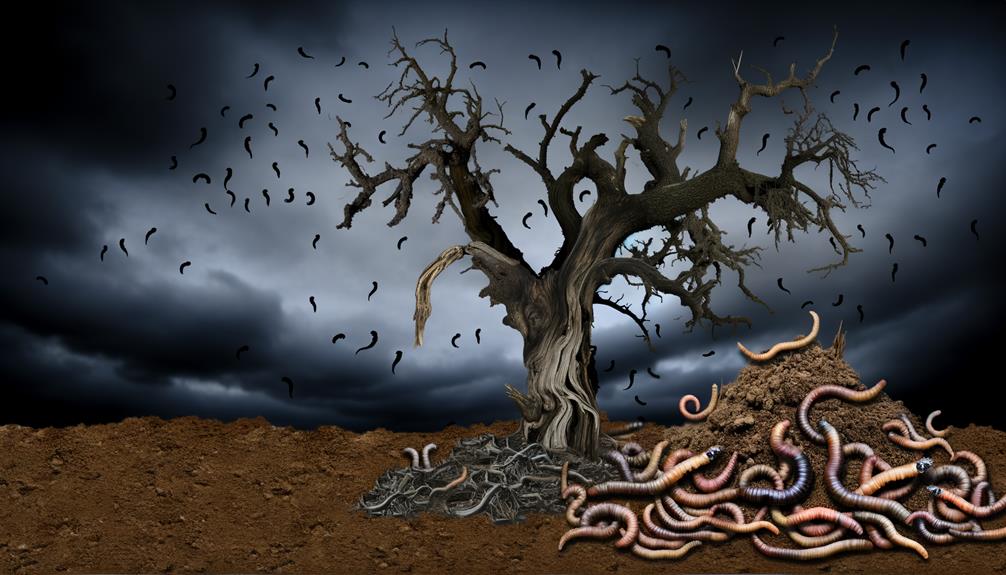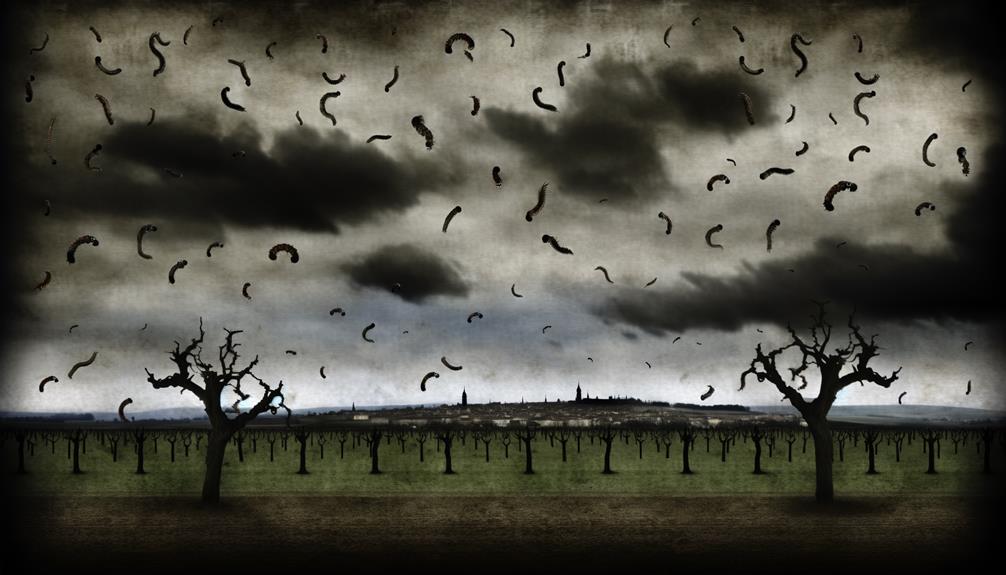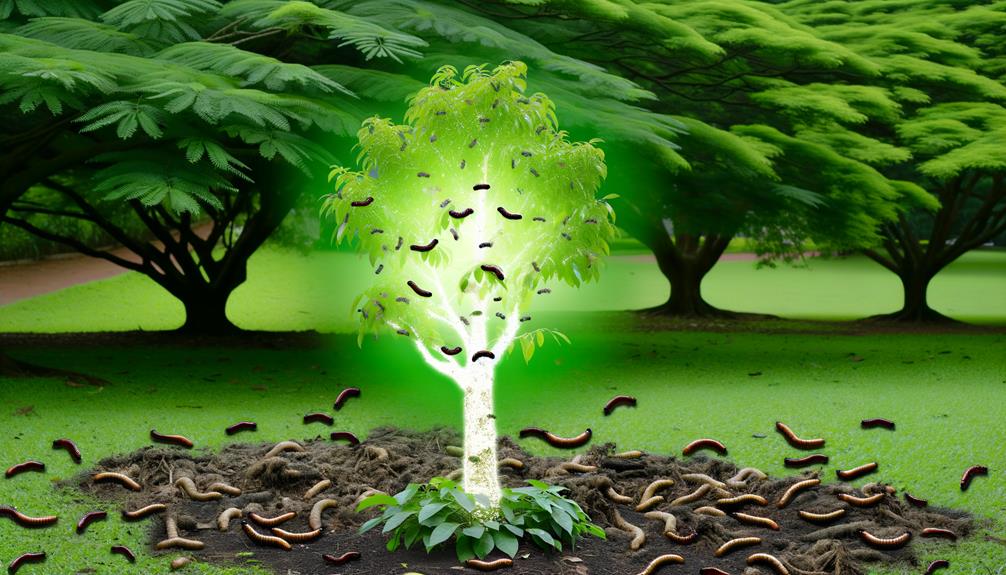Cankerworm Meaning In The Bible: Destruction and Restoration
In the Bible, the cankerworm symbolizes divine judgment and the severe consequences of sin. Referenced in texts like Joel 1:4 and Nahum 3:15-16, it represents stages of locust development that denote destruction and ruin.
This powerful imagery highlights the tangible impact of spiritual disobedience, underscoring the dire ramifications of straying from God’s mandates. The cankerworm serves as a metaphor for the gradual erosion of moral integrity and faith, urging believers towards repentance and emphasizing the necessity for maintaining spiritual vigilance.
Understanding this symbolism provides deeper insight into biblical teachings on accountability and redemption, offering valuable lessons for modern spiritual practices.

Cankerworm Meaning in the Bible: Symbol of Destruction and Divine Judgment
| Aspect | Explanation |
|---|---|
| Definition | A type of destructive insect or larva, similar to a caterpillar |
| Biblical Usage | Represents devastation and divine judgment |
| Key Verses | Joel 1:4, Nahum 3:15 – Associated with plagues and punishment |
| Symbolic Meaning | Symbolizes decay, judgment, and consequences of sin |
| Spiritual Lesson | Calls for repentance and promises eventual restoration by God |
Biblical References

The term ‘cankerworm‘ appears in several biblical passages, mainly within the Old Covenant, where it is often used symbolically to represent devastation and divine judgment.
Significantly, the Book of Joel (1:4) mentions the cankerworm as one of the stages of locust development, highlighting a sequence of destructive events. Similarly, in Nahum 3:15-16, the cankerworm imagery underscores the inevitability of ruin.
These references are not mere mentions of an insect but carry a deeper theological significance. The use of ‘cankerworm’ aligns with the biblical theme of warning and repentance, portraying the consequences of straying from divine mandates.
Therefore, understanding these references necessitates a grasp of their metaphorical implications within the broader scriptural narrative.
Symbol of Destruction

As a symbol of destruction, the cankerworm in biblical texts serves to illustrate the severe consequences of divine judgment and the far-reaching impact of spiritual disobedience.
This small yet devastating insect epitomizes the pervasive and consuming nature of sin’s repercussions. Scriptural references, particularly in the Book of Joel, depict the cankerworm as a destructive force, stripping away the land’s bounty and leaving desolation in its wake.
The use of the cankerworm metaphorically underscores the thoroughness of divine retribution, highlighting how spiritual neglect can lead to tangible, catastrophic outcomes.
Divine Judgment

In the context of divine judgment, the presence of the cankerworm in biblical texts serves as a poignant illustration of the devastating consequences that follow spiritual disobedience and moral failure.
The cankerworm, often depicted as a destructive force, symbolizes the tangible impact of divine retribution. This representation underscores the severity of God’s response to human transgressions and the ensuing desolation that epitomizes divine displeasure.
| Aspect | Biblical Reference | Interpretation |
|---|---|---|
| Divine Retribution | Joel 1:4 | Symbolizes God’s punitive measures |
| Spiritual Decay | Jeremiah 51:14 | Reflects the erosion of spiritual integrity |
| Moral Failure | Deuteronomy 28:39 | Highlights consequences of moral lapses |
| Prophetic Warning | Joel 2:25 | Serves as a caution for impending judgment |
This analytical framework highlights the theological significance of the cankerworm within the paradigm of divine judgment.
Consequences of Sin

In the biblical context, the cankerworm serves as a metaphor for the spiritual decay that results from sin, highlighting the profound deterioration that unrepented transgressions can bring upon individuals and communities.
This spiritual decline is often accompanied by manifestations of divine judgment, which serve as both a warning and a call to repentance.
However, the narrative also offers a path to redemption, emphasizing that sincere repentance can lead to divine forgiveness and restoration.
Spiritual Decay Warning
The metaphor of the cankerworm in the Bible serves as a poignant illustration of spiritual decay, symbolizing the destructive consequences of sin that gradually erode one’s faith and moral integrity. This imagery warns believers of the subtle yet pervasive nature of sin.
The process of spiritual decay can be understood through several key aspects:
- Erosion of Virtue: Sin undermines moral principles, leading to compromised ethical standards.
- Diminished Spiritual Importance: Persistent sin weakens one’s spiritual fervor and connection with God.
- Loss of Inner Peace: The guilt and unrest from sin disrupt inner tranquility and mental well-being.
- Alienation from God: Continued sin creates a chasm between the individual and divine presence.
Recognizing these symptoms is essential for spiritual vigilance and renewal.
Divine Judgement Manifestations
Recognizing the symptoms of spiritual decay, one must also understand how divine judgement manifests as a consequence of sin, reflecting the profound impact of moral transgressions on an individual’s life and their relationship with God.
Biblically, cankerworms symbolize this divine judgement, illustrating the devastating effects of sin. The Book of Joel vividly describes how these pests decimate crops, symbolizing the thorough ruin sin brings to spiritual and material well-being.
In the broader theological context, such manifestations serve as a divine wake-up call, urging individuals to acknowledge their transgressions. This form of judgement underscores the seriousness with which God views sin, providing a stark reminder of the inevitable consequences that follow moral failings, thereby reinforcing the necessity for spiritual vigilance.
Repentance and Redemption
Genuine repentance serves as the necessary precursor to redemption, offering a pathway to restore one’s relationship with God after the consequences of sin have manifested.
The Bible often uses the imagery of the cankerworm to illustrate the devastating effects of sin, symbolizing relentless destruction. However, through sincere repentance, individuals can seek divine forgiveness and rebuild their spiritual lives.
The process encompasses:
- Acknowledgment of Sin: Recognizing one’s transgressions and the need for divine mercy.
- Confession: Openly admitting faults to God and seeking His forgiveness.
- Restitution: Making amends wherever possible, demonstrating a true change of heart.
- Transformation: Embracing a renewed commitment to living according to God’s will.
These steps underscore the transformative power of repentance and the promise of redemption.
Prophetic Warnings

Scriptural references to cankerworms often serve as potent symbols in prophetic warnings, illustrating divine judgment and the consequences of disobedience.
These creatures appear in texts such as Joel 1:4 and Nahum 3:15-16, symbolizing devastating invasions and desolation. Prophets employed the imagery of cankerworms to emphasize the severity of impending calamities due to the people’s failure to heed God’s commands.
The cankerworm’s relentless consumption represents the thorough and inescapable nature of divine retribution. Within this framework, the cankerworm is not merely a physical pest but an embodiment of spiritual and communal decay.
Understanding these references provides deeper insight into the gravity of prophetic messages and the urgent need for adherence to divine will.
Themes of Repentance

Within the biblical narrative, the imagery of cankerworms not only underscores divine judgment but also serves as a powerful call to repentance, urging communities to return to faithful observance of God’s commandments. This dual symbolism can be analyzed through several critical themes:
- Recognition of Sin: The devastation caused by cankerworms highlights the consequences of straying from divine laws.
- Divine Mercy: The call to repentance emphasizes that divine judgment is coupled with the opportunity for redemption.
- Restoration: Repentance can lead to spiritual and communal restoration, as seen in prophetic promises.
- Urgency: The swift and destructive nature of cankerworms serves as a metaphor for the urgent need to seek forgiveness and amend one’s ways.
This thematic exploration reveals the intricate relationship between divine justice and mercy.
Lessons for Today

The biblical symbolism of the cankerworm provides profound insights for modern spiritual applications and strategies for overcoming life’s challenges.
By understanding the destructive nature of the cankerworm as a metaphor for sin and adversity, individuals can cultivate resilience and faith.
This ancient allegory consequently serves as a timeless guide for maneuvering contemporary tribulations with spiritual fortitude.
Modern Spiritual Applications
Drawing from the metaphorical significance of the cankerworm in biblical texts, modern spiritual applications emphasize the importance of vigilance and restoration in one’s moral and ethical life. This ancient symbol can guide contemporary spirituality through several key lessons:
- Vigilance Against Moral Decay: Just as cankerworms silently destroy crops, unchecked unethical behaviors can corrode personal integrity.
- Commitment to Restoration: Emulating biblical calls for renewal, individuals must endeavor to repair and restore broken aspects of their lives.
- Awareness of Subtle Threats: Small, seemingly insignificant actions or thoughts can accumulate and lead to significant moral decline.
- Perseverance in Faith: Maintaining one’s faith and ethical principles is essential, even when facing persistent challenges.
Overcoming Life’s Challenges
Building on the metaphorical insights of the cankerworm, individuals can derive practical strategies for overcoming life’s challenges by fostering resilience and proactive problem-solving.
The cankerworm, symbolizing destruction and loss, serves as a poignant reminder of life’s inevitable adversities. By acknowledging these trials, one can cultivate mental fortitude and adaptability.
Embracing a proactive stance involves identifying potential issues early and implementing preventative measures. This mirrors the biblical call to vigilance and preparedness.
Additionally, seeking wisdom through reflective practices and community support can fortify one’s resolve.
Fundamentally, the cankerworm’s biblical symbolism encourages an integrated approach to life’s obstacles, blending spiritual mindfulness with practical action to navigate and surmount difficulties effectively.
Conclusion
The cankerworm, as depicted in biblical texts, serves as a potent metaphor for divine judgment and the consequences of sin.
In Joel 1:4, the destruction wrought by cankerworms symbolizes the totality of divine retribution.
Much like the cankerworm devours crops, unchecked sin erodes the spiritual and moral fabric of a community.
This imagery underscores the urgent need for repentance and provides timeless lessons on the importance of spiritual vigilance and moral rectitude.






